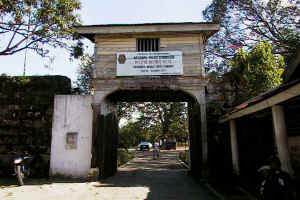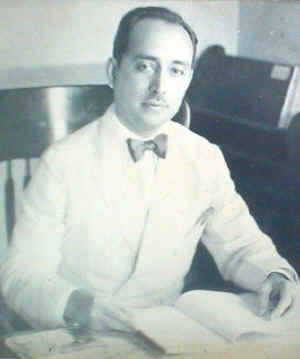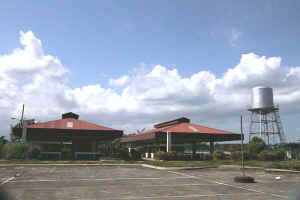Misamis was an Old Spanish town, which existed as far back as the Spanish era and was conquered strangely not by force of arms, but through faith by some Jesuit Missionaries. Though obscure, the origin of the name “Misamis” is believed to have been derived from the Subano word “Kuyamis” which is a variety of coconut. During the years the name persisted as an inference of geographical location and upon the advent of the Spanish settlers. The word “Kuyamis” easily gave way to the more conveniently pronounceable but corrupted word “Misamis”
By origin, Misamis was full of natives, particularly Subanos, the freedom loving people in Northern Mindanao. Shortly before the coming of the Spaniards, Misamis was threatened by the marauding pirates coming from the nearby provinces of Lanao. As a result, the Subanos migrated to the provinces of Misamis Oriental and Zamboanga del Norte, particularly Dapitan, the places where peace still reigned in their domains. Later, inhabitants from Bukidnon retreated to Misamis followed by the steady influx of settlers from Cebu and Bohol and formed one of the early migration to the place.

Cotta de Santiango: Its being used now as a headquarters of the Philippine National Police
In 1757, heightened by the piratical raids in the coastal towns of the archipelago. Misamis was chosen as the principal anchorage in Mindanao by the Spanish conquistadors. A stone fort of “Cotta” which took many years to complete was built and still stands today. With the town and f6rt established at Misamis the seat of the Military Government was transferred from Iligan to Misamis. Later, the town of Misamis became the capital of the district, which in the 18th and 19th centuries embraced much of the Northern Mindanao Province. During the Japanese occupation of Misamis in World War 11(1943-1945), the “Cotta” was garrisoned by a contingent of Japanese who dug foxholes near or under the walls. This undermining of walls later led to the destruction of the Southwest bastion in the earthquake of 1955.
Approximately three years after the World War II, Misamis became a Chartered City on July 16, 1948 by virtue of House Bill No.1656. This date coincides with the Feast of Our Lady of Mount Carmel. The name Misamis

Senator Jose Fortich Ozamiz
was renamed Ozamiz City in honor of the late Senator Jose Ozamiz, a man who pioneered underground resistance activities in Misamis Occidental against Japanese colonialists and was imprisoned at Fort Santiago and finally executed at La Loma Cemetery together with other Filipino patriots.
Ozamiz has gone a long way from an Old Spanish settlement to its present enviable economic position in the region. It is now emerging as the one of the fastest growing cities in Northwestern Mindanao.
Among the major developments that took place which strengthened its role as the growth center of the Panguil Bay Sub-region were the putting up of the basic infrastructures that give the needed boast that its different sectors of the economy lacks. The volume of trade and commerce in the recent years has increased and is being favored by the adequate transportation facilities. The opening of the Oroquieta-Molave Road, a Kuwait Grant Project is an asphalt concrete highway that provides easy access from North to South bound commuters. What has transpired most are the Cagayan de Oro – Ozamiz – Dipolog route, Ozamiz – Kapatagan route which has been realized through the operation of the two competing barge companies plying across Panguil Bay from the Port of Ozamiz to Mucas port in Kolambugan del Norte. The massive concreting of major thoroughfares with street lighting providing the transport services for a better conveyance of the riding public. It is complemented with the on-going improvement of the seaport facilities costing P75.7 M and the expansion of the Labo airport makes the city a major modal transshipment port of Mindanao.
The newly operated Integrated Bus/Jeepney Terminal and Public Market, a USAID grant has spurred economic activities of the city. Modern Shopping Malls flourished offering wide range of local and imported products at

City of Ozamiz Integrated Bus/Jeepney Terminal
reasonable prices. The proliferation of commercial banks from a less than ten before the sixties to more than twenty just recently is indicative of a progressive city.
Rural development was never left behind. Farm-to market roads have been concreted stretching towards the rem6test barangays allowing easy access for agricultural products to marketing channels. The development of water supply system at Poliken Spring is a full utilization of a natural water supply catering to households of sixteen barangays that in their lifetime has never been served with potable water.
The advent of cellular networks and landlines with digital direct dialing offers great advantage to the business sector and provide attraction to investors. Aside from the established reliable 220 volts power, the lowest electricity rates in the region, the reservoirs of MOWD, which provides quality water for agriculture, industry and domestic use.
Today it is strongly pursuing its development programs towards achieving its vision for sustainable growth and committing its resources to respond to the needs of its constituents.
Bodacious view about RY OF OZAMIZ CITY. Thoroughly enjoy this point of view!